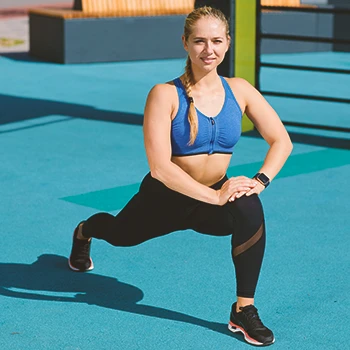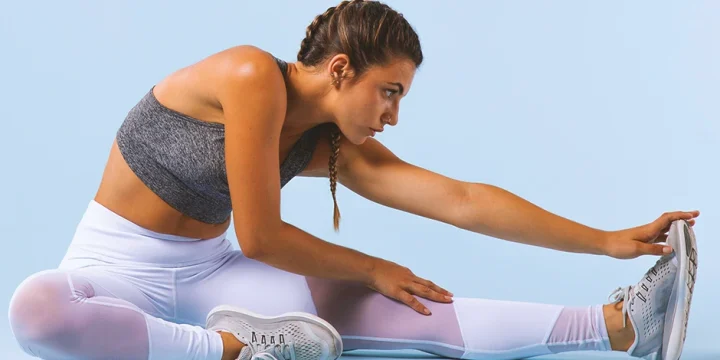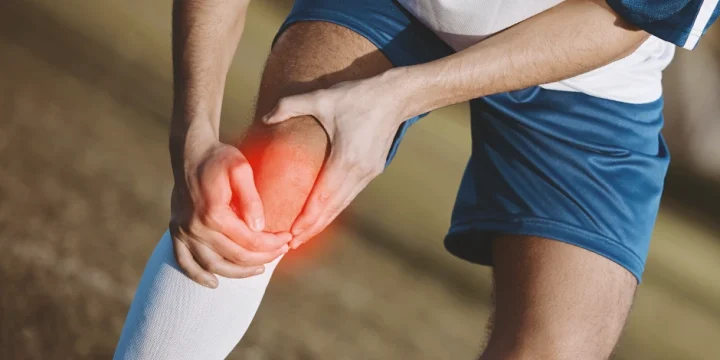Piriformis syndrome is the main cause of a large portion of back pain issues. And if you’ve ever had to deal with it, then you know how sore it can become.
As a personal fitness coach, I recently had a client who was dealing with this problem, and together with a physiotherapist, I was able to help him get rid of the pain.
I decided then that I should create a post with the help of the physio to come up with a few piriformis stretches that you can easily do at home.
Quick Summary
- The five best stretches for piriformis syndrome include the lying stretch, sitting stretch, pigeon pose, knees to the side, and hip flexor lunge.
- These stretches target the piriformis muscle, improving hip flexion and reducing stiffness and inflammation.
- According to the Mayo Clinic, careful stretching is crucial, especially for those with severe sciatic nerve pain or disc problems.
- In my experience as a fitness coach, these stretches are highly effective in managing piriformis syndrome and enhancing overall hip mobility and comfort.
How Do You Loosen Your Piriformis Muscle?

You loosen your piriformis muscle with targeted stretches around the hip joint.
What you want to focus on is any kind of stretch that impacts and twists the hips to improve the range of motion.
That would also include a long adductor stretch, but I’ll get to some examples shortly.
What I would say is that if you have severe sciatic nerve pain or problems with disks in your back, then you need to talk to a doctor or go for physical therapy first.
According to the Mayo Clinic, it’s very easy to do more damage than good with nerve issues like sciatica [1].
“Sciatica is the name given to pain caused by irritation of the sciatic nerve. Anything that irritates this nerve can cause pain, ranging from mild to severe.”
- Justin Choi, M.D.
If you just feel some lower back stiffness that affects your hips as well, then stretching on a daily basis could make a huge difference.
Best Stretches For Piriformis Pain

Let me show you five stretching exercises for piriformis syndrome.
1. Lying Stretch
Here is the first and most effective piriformis muscle stretch:
- For this supine piriformis stretch, lie on your back with feet flat on the floor
- Lift your sore leg up and place the foot on the opposite knee.
- Now gently pull the other leg towards your body and feel the stretch into your glutes and hips.
- Once you’re done, switch legs and repeat the process.
2. Sitting Stretch
The seated piriformis stretch will help to loosen the lower back a bit more:
- Get into the starting position by sitting on a yoga mat with both legs straight.
- Bend the knee on the side where you have leg pain and place the foot on the other side of the other leg.
- Twist your upper body to the side of the bent knee and use your elbow to push your body into a further twist.
- Do the same for the opposite side.
3. Pigeon Pose

This is a great yoga position that can help to relieve buttock pain and open up your hips a bit more.
- Bring the affected leg in front of you with the knee bent and on the ground.
- Place your hands in front of your front knee.
- The opposite leg will be stretched out behind you, and the aim is to get your buttocks as low to the ground as possible.
- You might find it more difficult with one leg than the other, and that will show you which side to focus on more.
4. Knees To The Side
This is a simple stretch for piriformis syndrome pain that won’t require much flexibility.
- Lay down on a yoga mat with your knees bent.
- Place your hands behind your head and focus on keeping your shoulders on the ground.
- Now, twist your lower body and legs until your knees reach the ground and hold the position.
- Complete this outer hip stretch by twisting over to the other side.
5. Hip Flexor Lunge

Here is a standing piriformis stretch that you could do at any time throughout the day.
- Take one step forward and bend the front knee to lower your body down.
- Your lower leg should remain vertical over your foot.
- Bring your right knee down to the ground and tilt your upper body back.
- You should feel this stretch in the hip flexors, quads, and even the glutes of the front bent leg.
Benefits of Stretches for Piriformis Syndrome
- Alleviates muscle tightness: Stretching the piriformis muscle helps alleviate tightness and discomfort in the buttocks and lower back. Regular stretching can reduce muscle stiffness, enhancing flexibility and range of motion, which is crucial for daily activities and physical performance.
- Reduces sciatic nerve irritation: Piriformis syndrome often irritates the sciatic nerve. Stretching can help relax the piriformis muscle, reducing pressure on the sciatic nerve. This leads to decreased sciatic pain, improving comfort during sitting, standing, and movement.
- Improves hip mobility: Stretching the piriformis muscle enhances hip joint mobility. Increased flexibility in the hips allows for better movement and alignment, reducing the risk of injuries caused by compensatory movements and helping maintain proper posture and gait.
- Prevents muscle imbalances: Regular stretching can prevent muscle imbalances that often develop with piriformis syndrome. By maintaining muscle symmetry, stretching helps in evenly distributing the load and stress across the hip and lower back, promoting overall musculoskeletal health.
- Enhances blood circulation: Stretching the piriformis muscle improves blood circulation in the lower body. Better blood flow aids in the healing process of strained muscles and reduces the buildup of lactic acid, leading to quicker recovery and reduced muscle soreness.
Related Articles:
FAQs
What Is The Fastest Way To Fix Piriformis Syndrome?
Stretching, exercises, and physiotherapy are the fastest ways to fix piriformis syndrome. The aim is to loosen tight muscles and strengthen them to better support the upper body and hip movements.
Does Stretching Fix Piriformis Syndrome?
Yes, stretching can fix piriformis syndrome as long as you’re not dealing with serious nerve pain. The stretching can loosen tight muscles and ultimately reduce inflammation in the area where it’s causing soreness.
References:
- https://www.mayoclinic.org/diseases-conditions/sciatica/symptoms-causes/syc-20377435
About The Author
You May Also Like






